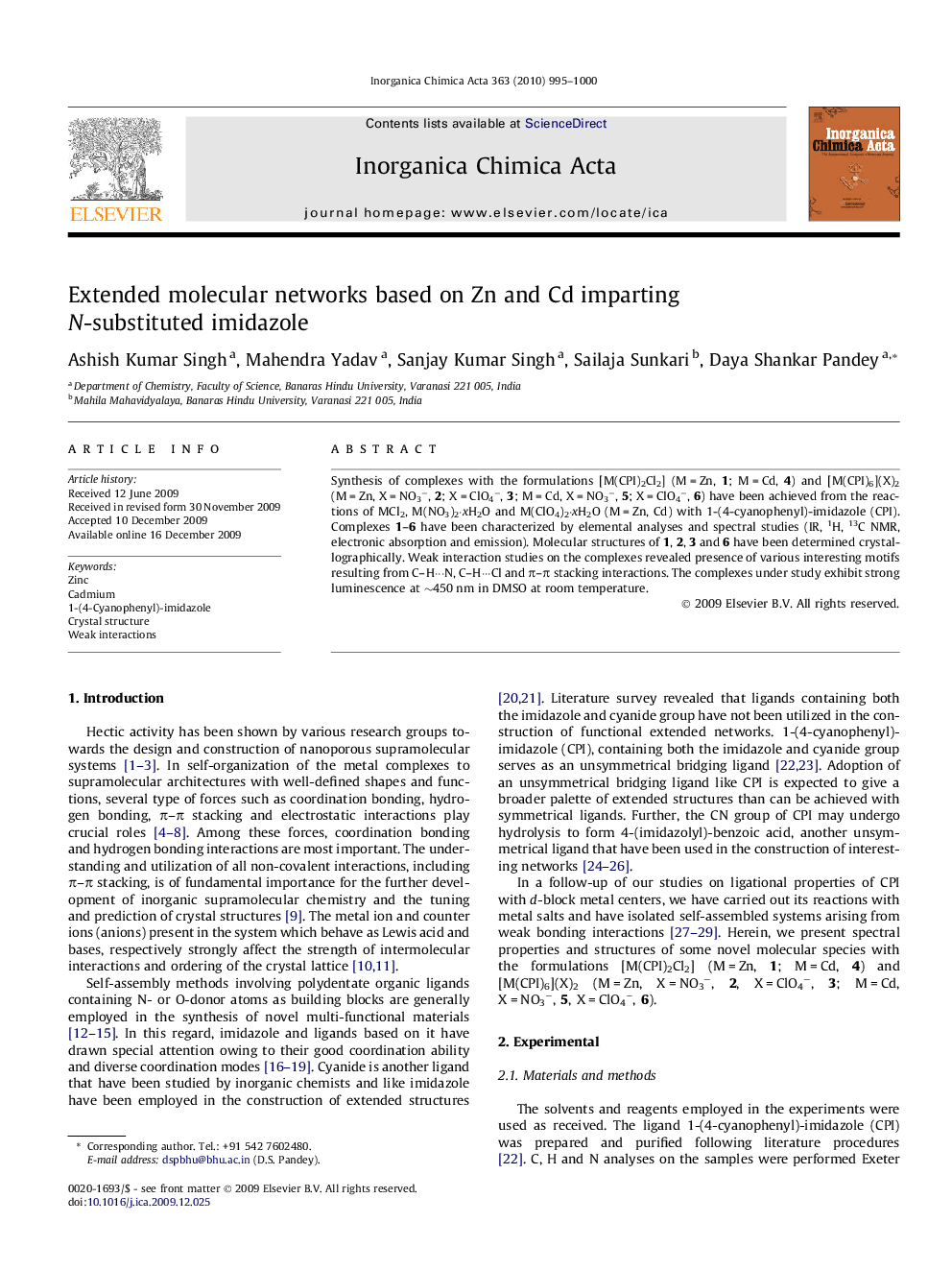| Article ID | Journal | Published Year | Pages | File Type |
|---|---|---|---|---|
| 1309321 | Inorganica Chimica Acta | 2010 | 6 Pages |
Synthesis of complexes with the formulations [M(CPI)2Cl2] (M = Zn, 1; M = Cd, 4) and [M(CPI)6](X)2 (M = Zn, X = NO3−, 2; X = ClO4−, 3; M = Cd, X = NO3−, 5; X = ClO4−, 6) have been achieved from the reactions of MCl2, M(NO3)2·xH2O and M(ClO4)2·xH2O (M = Zn, Cd) with 1-(4-cyanophenyl)-imidazole (CPI). Complexes 1–6 have been characterized by elemental analyses and spectral studies (IR, 1H, 13C NMR, electronic absorption and emission). Molecular structures of 1, 2, 3 and 6 have been determined crystallographically. Weak interaction studies on the complexes revealed presence of various interesting motifs resulting from C–H···N, C–H···Cl and π–π stacking interactions. The complexes under study exhibit strong luminescence at ∼450 nm in DMSO at room temperature.
Graphical abstractLuminescent complexes with the formulations [M(CPI)2Cl2] (M = Zn, 1; M = Cd, 4) and [M(CPI)6](X)2 (M = Zn, X = NO3−, 2; X = ClO4−, 3; M = Cd, X = NO3−, 5; X = ClO4−, 6) based on 1-(4-cyanophenyl)-imidazole (CPI) have been synthesized and characterized by elemental analyses and spectral studies and single crystal X-ray crystallography.Figure optionsDownload full-size imageDownload as PowerPoint slide
